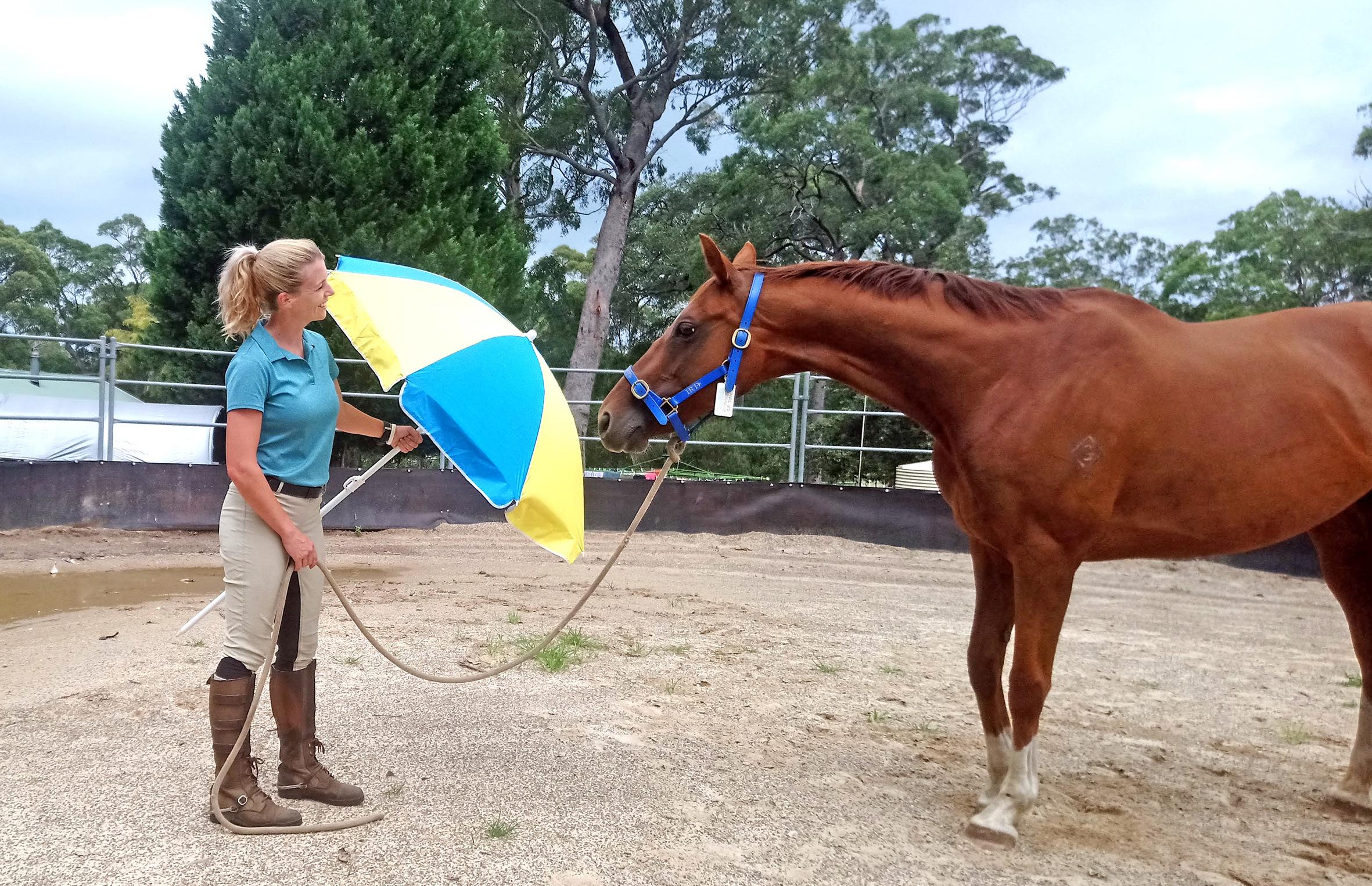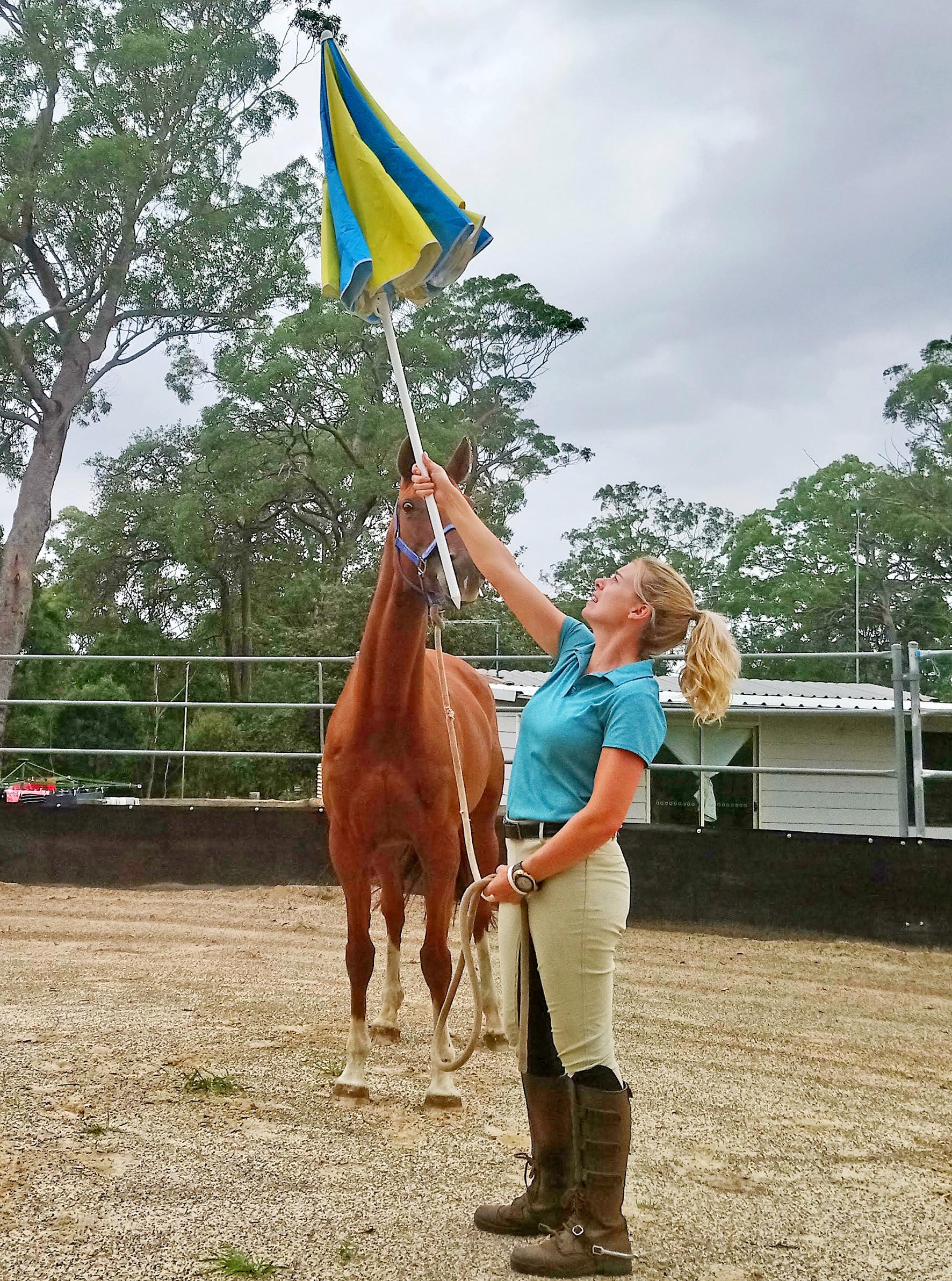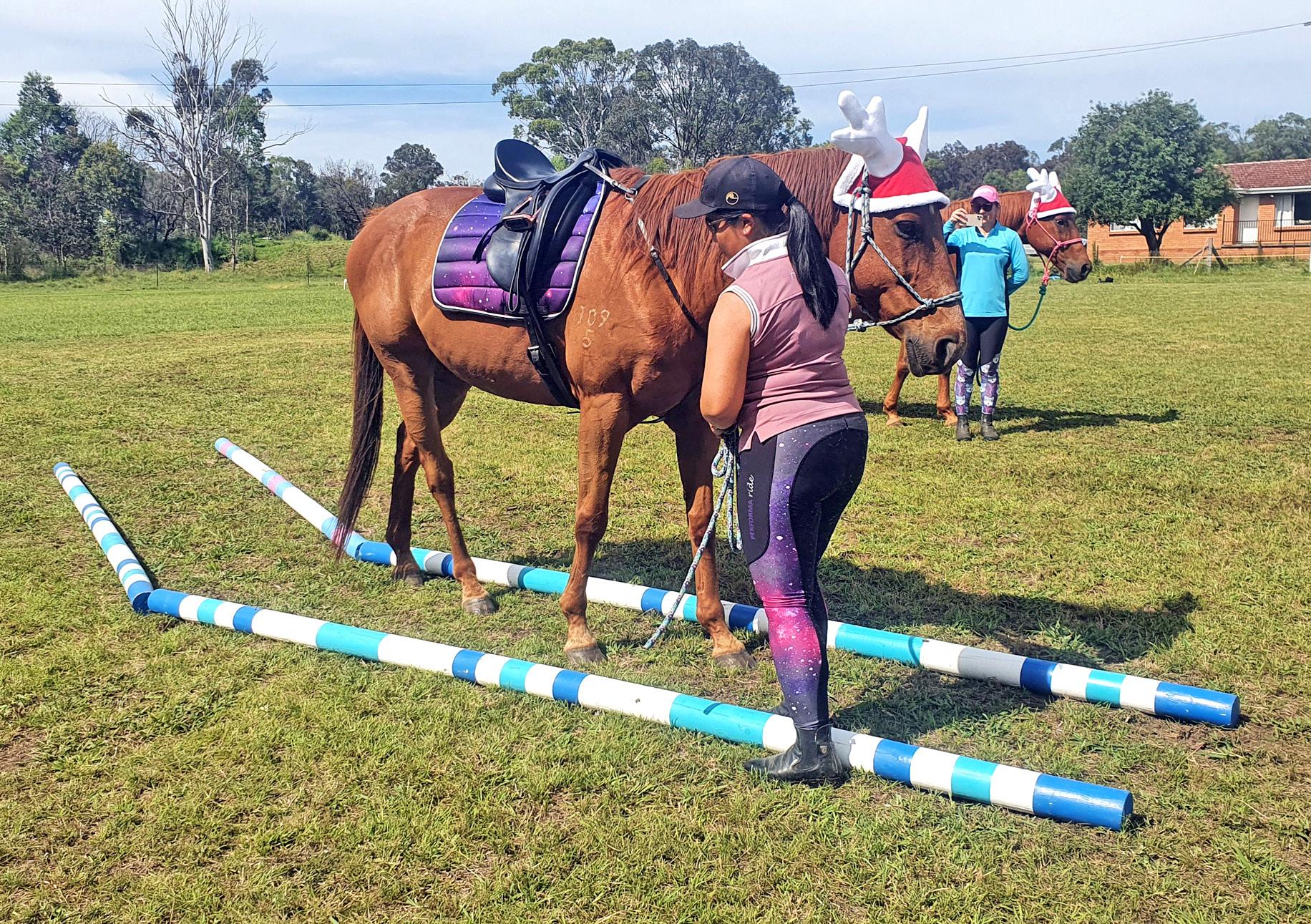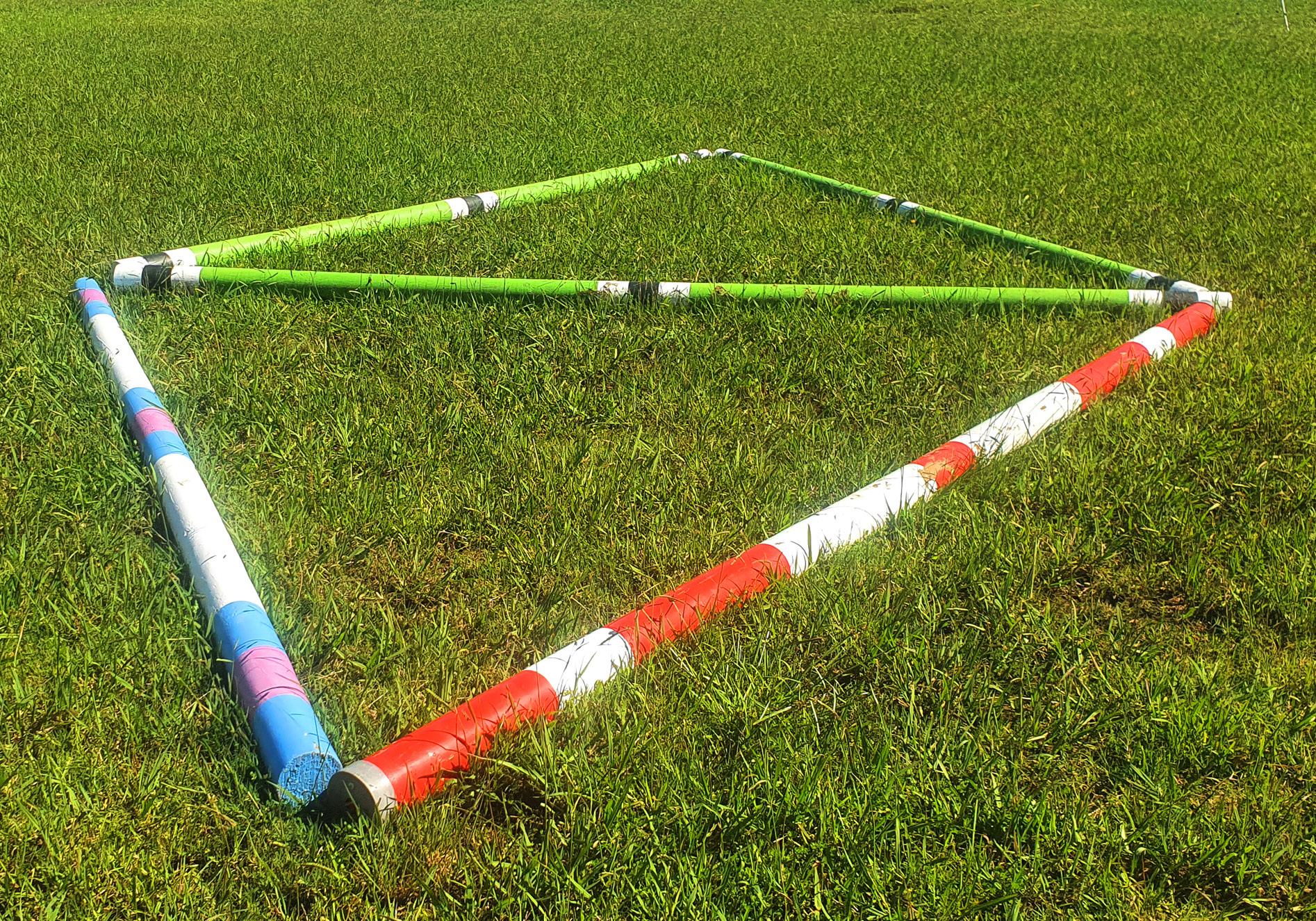
6 minute read
Feature: Never mind the weather
FEATURE
Never mind the weather
If you find shorter days and inclement weather dampen your enthusiasm, it’s time to fire up your motivation with these hot tips from CHRISTINE ARMISHAW.
As daylight dwindles, motivation can become an elusive beast. Add to that dreary weather and unsuitable ground underfoot, and what’s a rider to do? Firstly, being mindful of the things you can control and the things you can’t will go a long way towards keeping you from beating yourself up. There’s no point getting frustrated if you’re not able to keep your horse in work the way you would prefer due to circumstances you can’t change. Unless you have an indoor arena, outside conditions will to some degree dictate what you are able to do with your horse. But never fear, options still abound if you are willing to think outside the horse box.
Quick session ideas
If time is your biggest adversary, then opt for groundwork exercises to cut down on tacking-up time. Teach your horse to calmly and reliably move forward off a light aid, to stop from a light aid, and to move sideways. It is amazing the number of times I run through these exact lessons with clients when I first go out and meet them. Horses have either become a little dull to the aids over time or, more often, have not been taught these fundamentals correctly in the first place.
Groundwork offers a time-effective approach to improving your horse’s overall way of going. It’s worth noting that the most constructive aids taught from the ground are those able to be replicated from the saddle, so your horse essentially has the same lesson repeated once you are on board. For example, if you get your horse to follow you on the ground when you start walking, how will you then turn that into a ‘go’ aid once you’re mounted?

Always go at your horse’s pace and finish the session on a high.
You can’t! So you have to use another aid, which can make life harder for your horse. Consistency is the theme here: make it easy for your horse to be successful by not changing the rules along the way.
Desensitisation is another great way to fill shorter windows of time. Teach your horse to walk calmly across a tarpaulin; feel comfortable with an umbrella opening and closing; and to walk forwards and backwards through a chute of poles. These exercises can also be transitioned to under-saddle activities once the groundwork versions have become boring for your horse. Talk about confidence building! Your imagination is your best friend here, just make sure anything interesting you use is safe for your horse. Every horse is different too, so what may be especially scary to one might not be that big of a deal to another. Always go at their pace and finish the session on a high.
The five-pole diamond is a great multiuse exercise, and can save heaps of time if you leave it set up in your arena or paddock. Lay out three poles as a triangle, then add two more to the other side of the middle pole to create a diamond. You can use this in numerous ways over several rides. Walk over the short ends, aiming to get the same number of steps consistently; do the same in trot, practise lengthening and shortening strides over the different pole widths; work on a diagonal, trotting across three poles from the base of one triangle to the top of the next; ride down the long line from one end of the diamond to the other, this is bound to pinpoint your horse’s natural left or right drift, after which your task is straightness! You can canter one stride in and out of the triangles, and you can even practise your cross country corners by riding over the pointy ends as if they were apexes. Another good one is to work on rhythm and consistency as you ride a circle, using the three poles in the middle as trotting poles on a curved line.
Combating the elements
For the poorest of days, you could consider finding a local indoor arena to train in. Meet up with your coach, take a friend, or practise getting your horse out on their own. Regularly getting offproperty is a fantastic way to build your horse’s confidence ahead of your next competition, and improve the way a more nervous type reacts to new surroundings.
If you have to resort to non-horse activities, get online and watch the best of the best riding their horses in whatever discipline tickles your fancy. There is so much that can be learned from analysing videos of the pros. You might examine lower leg position; where the eyes are looking as the rider travels down the arena or over a jump; how a rider distributes their weight in the saddle; when their hands soften or tighten on the reins. If you have a specific challenge you’re working on, find someone who does it well and investigate what they do differently to you, then give it a try next time you saddle up.
We are so lucky to live in an age where there is a plethora of learning and training available at the click of a button. Sometimes the struggle is simply thinking of new material and a rainy day is a great opportunity for taking the time to fill your ideas vault. Log on as an Equestrian Hub VIP to discover new exercises to keep your routine fresh, and to find training ideas that will boost your knowledge base.



Precision training
Finally, taking time to train your brain while off-horse is invaluable. The benefits it can have for your real-life effectiveness in the saddle are massive (see Matters of the mind in this issue).
A classic example of mind-training is a basketball-related study conducted at the University of Chicago. Participants were split into three groups and each group was tested to see how many free-throws they could make. Then for the next month the control group did nothing, the second group practised free-throws every day for an hour, and the last group visualised themselves making perfect free-throws without ever touching a ball.
After thirty days, they were all tested again – and here’s where it gets interesting: the ability of the control group, who did nothing, declined; the group that physically practised free-throws improved by 24 per cent, and the visualisation-only group improved by 23 per cent without ever touching a basketball.
Visualisation is regularly and successfully used in many sports. In fact, it can work so well that it’s too good to leave only for when you can’t ride. Just imagine how much you could improve if you trained like this every day! I have one client who practises riding her dressage tests in bed every night before she goes to sleep. It shows too, because even when it’s been raining all week, or she’s been stuck at work late and hasn’t been able to ride, I can still see the positive impact it’s had on her riding when we catch up at her next lesson.
Wet, wild or windy, you are now armed with the knowledge and resources to train in one form or another. Don’t let rain or darkness hold your equestrianism back, it’s time to go forth and level-up.










